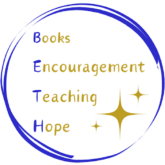 The Elements of Art are the basics that make up any work of art, that are looked for and analyzed when studying a work of art. The elements are line, shape and form, space, color, and texture. The Getty Museum has an excellent article about how to recognize and interpret these elements when looking at an art piece.
The Elements of Art are the basics that make up any work of art, that are looked for and analyzed when studying a work of art. The elements are line, shape and form, space, color, and texture. The Getty Museum has an excellent article about how to recognize and interpret these elements when looking at an art piece.
Considering these elements when looking at art enhances the experience, and brings depth and understanding to one’s viewing.
But how does this relate to writing, Beth?
I thought you might ask that…
Line — Does the story follow a logical progression? Is it static and flat, or is there an arc, a dramatic rise and fall?
Shape and form — Are the characters one-dimensional, or do they have shape and form as one reads the words?
Space — Just as in art, negative space, or white space, is necessary in writing. Too many words, especially adverbs and adjectives, can crowd the story and the characters and muddy the picture for the reader.
Color — Although adverbs and adjectives can create muddiness if not used carefully, there is still need for color in writing, which can be added through word choice, especially what Emma Walton Hamilton calls “juicy verbs.” Reading that someone “scuttled off” gives a much clearer picture than reading that the person “hurried off.”
Texture — This is related to shape and form, but there are differences, as well. Texture keeps everything from seeming the same. There is perhaps some abrasiveness, or rough contrasted with smooth in the characterizations. Texture gives some depth and difference to the characters and the story. It isn’t all on one plane, bland.
Can you think of ways to apply the elements of art to your writing or your reading?


I really liked how you compared art to writing Ms. Stilborn! I think what you said for each Element of Art is true for each writer and I think everyone should use your comparison as a guideline to writng a good novel!
Erik 🙂
Wow, thanks Erik! I will certainly try to use these elements as I write the chapter book I’m working on right now.
Great post! 🙂 I’m a new follower from the AtoZ challenge. Nice to meet you!
Thanks, Margo! Welcome to my blog! Lovely to meet you — I’ll scurry right on over to your blog.
I’ll second Erik’s comment.
Thanks, Stacy!
Excellent post. I like the comparison of the elements of art to witing. Makes a lot of sense and provides simple guidelines. Interesting the overlap in all forms of art.
Thanks, Pat. I had such a good time hunting down terms in the arts that I could then relate to writing. “E” was one of the trickier ones. Glad you like what I came up with.
Juicy verbs! I love that phrase!
All the credit goes to Emma Walton Hamilton. She is a gem of a teacher, mentor and encourager.
LOL!!! You immediately asked the question that popped into my mind then did a wonderful job answering it element by element. As I considered texture, I thought about the wonderful depth created by having the plot and a subplot running through the vein of the story, how that creates so much more to intriegue the reader’s mind.
Oooh, I love your thoughts on texture! Thank you, Angela!
Inlove the way you’ve compared art to writing. It reminds me of Imagery. I think it’s very important to have strong images in our writing. The reader needs to be able to picture something when we describe it.
A fantastic example for me is Linda Gillards Emotional Geology. I’ve never been to the Orkney Isle but by the time I’d finished reading that book, wow, I was determined i was gunna move the whole family there! Lol
xx
Oh, good point about imagery. I haven’t read Emotional Geology, but I’m putting it on my must read list! Lillian Beckwith’s books about the Hebrides do that for me.
Great comparison, Beth. I never thought about it like that. Then again, I know next to nothing about art 🙂
I love looking at things and seeing something new and different in them! (You may have noticed this about me. 😉 )
Thanks, Susanna!
Hi, Beth, Wonderful post. I love art and it is easy to see all the connections between the two. Thank you. Bst regards to you. Ruby
Thanks, Ruby. Creative processes are so interconnected, if we look beyond the surface. Best to you, too!
HI, Beth. This is an interesting post. But it’s ideas are a bit complex for an old Bear.
Don’t sell yourself short, Rob-bear! Thanks for reading!
Catching up on the last few letters from A to Z. Great post. I’ve just started being more conscientious about incorporating art into my writing and it does create a much stronger visual. Excellent advice.
A2ZMommy and What’s In Between
Thanks, Tracy! I’m glad you’re finding that thinking artistically adds to your writing.
Yes, writing is an art. 🙂 I like how you broke it down here
Thanks, Steph. I found the elements that were listed to be so perfect for appication to writing.